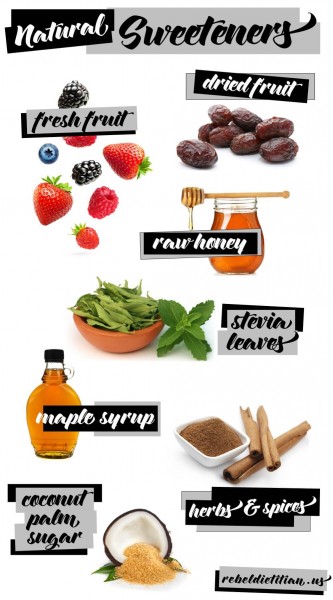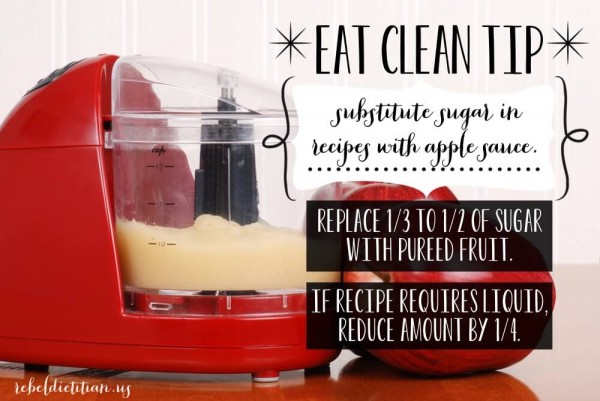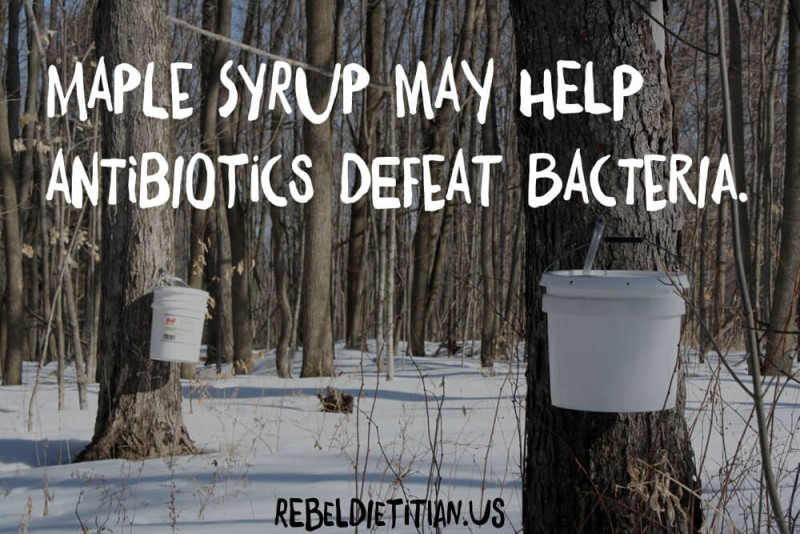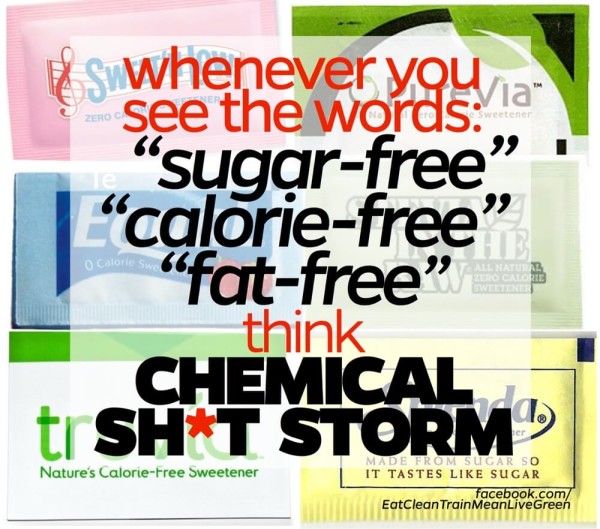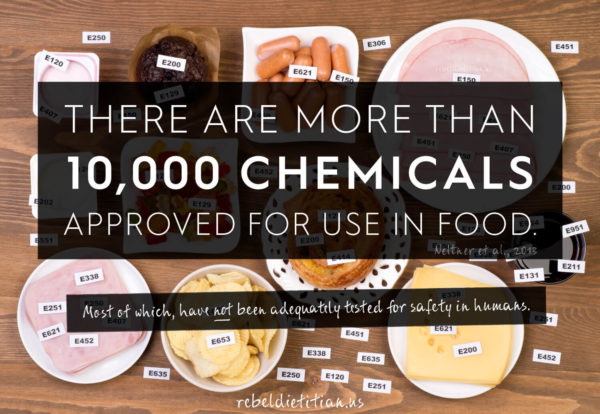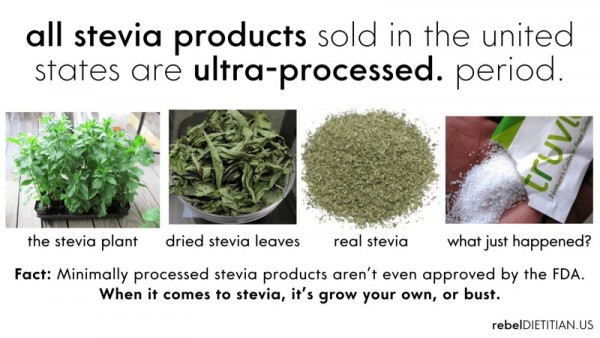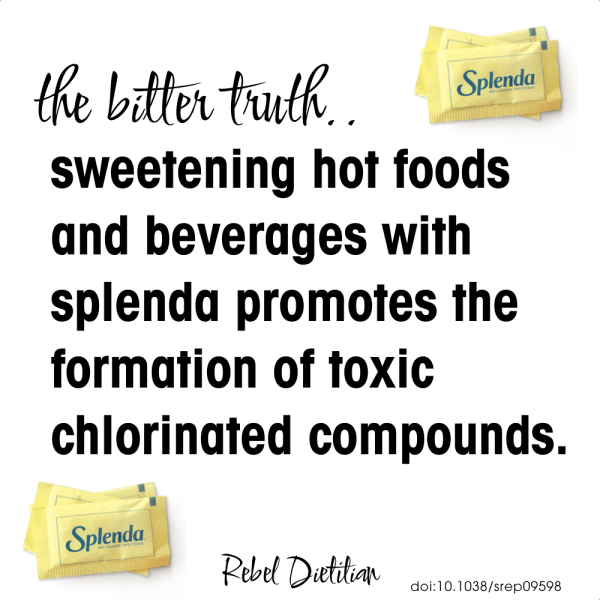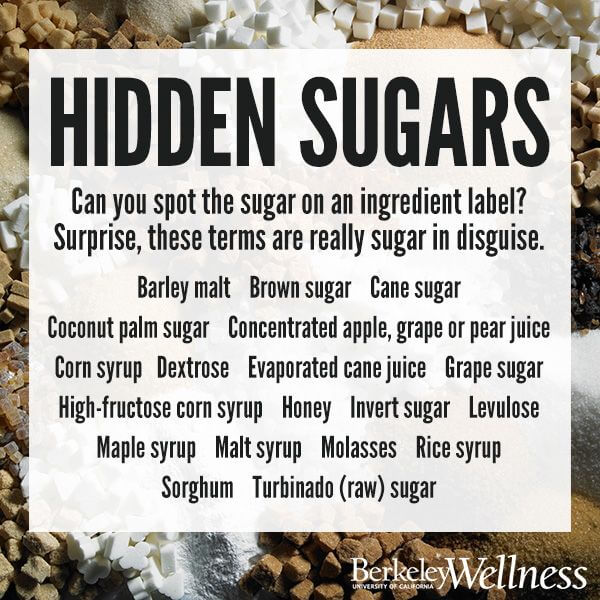Natural sweeteners have been used by humans for food and medicinal purposes for thousands of years. Ultimately, man’s quest for the sweet things in life led to the discovery and development of ultra processed sweeteners, with varying sweetness, taste, and functionality.
Minimally Processed Sweeteners
As you might imagine, natural sweeteners are minimally processed and unrefined. Examples of minimally processed sweeteners include fresh fruit, fresh juice, naturally dehydrated fruit (e.g., medjool dates), wild honey, pure maple syrup, granulated maple sugar, whole stevia leaves, coconut palm sugar, and sucanat.
- Fresh Fruit
- Dried Fruit
- Wild Honey
- Maple Syrup
- Maple Sugar
- Coconut Palm Sugar
- Crushed, Whole Stevia Leaves
- Sucanat
Wild Honey
Sweeteners enjoyed by our early human ancestors would have included the sweet taste of berries and wild honey. In fact, wild honey and berries remain an important source of energy and nutrition for all warm-climate modern day hunter-gatherer tribes (e.g., the Hadza of Tanzania). Honey is an essential energy source as well as a tasty treat and both Hadza men and women rank honey as their favorite food (source).
Foragers gather wild berries and honey throughout the day from bushes and trees, often relying on birds to guide them to hollowed-out trees. An African bird called the greater honeyguide is famous for leading people to honey, and a new study shows that the birds listen for certain human calls to figure out who wants to play follow-the-leader (source).

Maple Syrup
While there are written accounts of maple sugaring in North America dating back to the mid 1500s, the exact origins of maple sugaring are unknown. Some reports suggest Native American Indians introduced maple syrup to French explorers in 1540. History also remains silent on whether Native Americans boiled down the sap to maple sugar, or if these techniques were introduced by the French explorers and missionaries. Either way, Native Americans and European settlers were both using iron and copper kettles to make syrup and maple sugar by the 1700s. However, it wasn’t until the Civil War that the maple syrup industry was born.
Medjool Dates
Contrary to popular belief, dates have a low GI and provide numerous health benefits. As such, dates make a great alternative to sugar in both raw and cooked recipes. Below are tips for substituting medjool dates in your recipes (e.g., smoothies and raw energy bars).
- In general, substitute 1 chopped medjool date for every 1 tablespoon of natural sweetener
- In smoothie or raw food recipes, consider soaking your medjool dates in filtered water for 1 to 2 hours prior to use
- Soaking will soften the dates enabling a more even and consistent distribution of the sweetener
- After soaking, be sure to rinse the dates with fresh water and remove the pits
In the photo gallery below, I also provide the instructions for substituting sugar with unsweetened applesauce.
Ultra Processed Sweeteners
Ultra processed sweeteners, on the other hand, include sugar substitutes, sugar alcohols, and high intensity sweeteners. The use of ultra processed sweeteners is on the rise due to growing consumer interest in health foods and weight loss. However, recent research seems to suggest regular consumers of sugar substitutes may be at increased risk of weight gain and type 2 diabetes.
- Stevia
- Agave Nectar
- Monk Fruit
- Splenda
- Sugar Alcohols
Sugar Substitutes
Examples of sugar substitutes approved for use in the United States include the following:
- Stevia (e.g., Truvia®, PurEvia®, Nectevia®, Stevia in the Raw®, Sweetleaf®, Pyure®, and Fructevia®)
- Luo Han Guo Fruit Extract or Monk Fruit (e.g., Nectresse®)
- Agave Nectar
Stevia
All products marketed as Stevia in the United Statues are ultra processed and refined. Unfortunately, whole leaf stevia and crude stevia products have not been approved for use in the United States by the Food and Drug Administration (FDA). Products marketed as “Stevia” in the United States include Truvia®, PurEvia®, Nectevia®, Stevia in the Raw®, Sweetleaf®, Pyure®, and Fructevia®.
- Stevioside is 200 times sweeter than table sugar
- Rebaudioside A (Reb A) is 300 times sweeter than table sugar
- Whole leaf stevia (or crude stevia) is approximately 15 times sweeter than table sugar
Agave
Agave nectar is another sugar substitute promoted as “natural” with benefits including a low glycemic index. However, the truth is, agave nectar is another ultra-processed and refined sweetener with a high percentage of fructose and little evidence to support long-term safety or health benefits.
High-Intensity Sweeteners
Examples of high-intensity sweeteners approved for use in the United States include the following:
- Aspartame (e.g., Equal®, Nutrasweet®, and Canderel®)
- Acesulfane-K (e.g., Sweet One® and Sunett®)
- Saccharin (e.g., Sweet ‘N Low® and Sugar Twin®)
- Sucralose (e.g., Splenda)
- Cyclamate
- Alitame
- Neotame
- Neo-DHC: Approved in the United States as a “flavor enhancer” only
Sugar Alcohols
Examples of sugar alcohols approved for use in the United States include the following:
- Sorbitol
- Xylitol
- Maltitol
- Isomalt
- Lactitol
- Tagatose (Galactose and Sucralose)
- Mannitol
- Erythritol
- Glycerol
- Hydrogenated Starch
Learn More
Rebel Lifestyle
To learn more about my lifestyle, visit the page titled Rebel Lifestyle.
Meal Planning
To learn more about meal planning, visit the page titled Meal Planning.
Shopping Lists
To grab my shopping lists, visit the page titled Shopping Lists.
Posters and Charts
To view a collection of my posters and charts, visit the page titled Posters.
Pinterest and Facebook
Natural Sweeteners
Except where otherwise noted, content on this site is licensed under a CC BY-NC-ND 4.0 license. This means you are free to use my work for personal use (e.g., save the file to your computer or share via social media) as long as you do not modify the image or use the image for commercial purposes ($). Big hugs! Dana
References:
Marlowe FW, Berbesque JC, Wood B, Crittenden A, Porter C, Mabulla A. Honey, Hadza, hunter-gatherers, and human evolution. J Hum Evol. 2014;71:119-28.
History of Maple. University of Vermont Libraries. Available at: http://library.uvm.edu/maple/history/. Accessed January 10, 2017.
Buszek, B. R. (1982). The Sugar Bush Connection: Maple Cookery, “Sweet Water” Folklore, Sugaring-Off Facts: Sucre D’érable Recettes D élicieuses. Granville Centre, Nova Scotia: Cranberrie Cottage.
Hays, W. P. & Hays, R. V.. (1973). Foods the Indians Gave Us. New York: I. Washburn.
Lawrence, J., Martin, R., & Boisvert, P. (1993). Sweet Maple: Life, Lore and Recipes from the Sugarbush. Montpelier, VT: Vermont Life.
Morselli, M. (1985). Maple Research at the University of Vermont. Burlington, VT: Vermont Agricultural Experiment Station.
Imamura F, O’connor L, Ye Z, et al. Consumption of sugar sweetened beverages, artificially sweetened beverages, and fruit juice and incidence of type 2 diabetes: systematic review, meta-analysis, and estimation of population attributable fraction. Br J Sports Med. 2016;50(8):496-504.
Reid AE, Chauhan BF, Rabbani R, et al. Early Exposure to Nonnutritive Sweeteners and Long-term Metabolic Health: A Systematic Review. Pediatrics. 2016;137(3):e20153603.
Brown RJ, De Banate MA, Rother KI. Artificial Sweeteners: A systematic review of metabolic effects in youth. International journal of pediatric obesity : IJPO : an official journal of the International Association for the Study of Obesity. 2010;5(4):305-312. doi:10.3109/17477160903497027.
Swithers SE. Artificial sweeteners are not the answer to childhood obesity. Appetite. 2015;93:85-90.
Fowler SP, et al. Fueling the obesity epidemic? Artificially sweetened beverage use and long-term weight gain. Obesity (Silver Spring). 2008;16(8):1894-900.
Inglett GE. A history of sweeteners–natural and synthetic. J Toxicol Environ Health. 1976;2(1):207-14.
Philippe RN, De mey M, Anderson J, Ajikumar PK. Biotechnological production of natural zero-calorie sweeteners. Curr Opin Biotechnol. 2014;26:155-61.
Pepino MY. Metabolic effects of non-nutritive sweeteners. Physiol Behav. 2015 Jun 19. pii: S0031-9384(15)00372-8. doi: 10.1016/j.physbeh.2015.06.024.
Stellman SD, Garfinkel L. Artificial sweetener use and one-year weight change among women. Prev Med. 1986;15(2):195-202.
Colditz GA, Willett WC, Stampfer MJ, London SJ, Segal MR, Speizer FE. Patterns of weight change and their relation to diet in a cohort of healthy women. Am J Clin Nutr. 1990;51(6):1100-5.
Simon BR, et al. Artificial sweeteners stimulate adipogenesis and suppress lipolysis independently of sweet taste receptors. J Biol Chem. 2013 Nov 8;288(45):32475-89. doi: 10.1074/jbc.M113.514034.
Porikos KP, Booth G, Van Itallie TB. Effect of covert nutritive dilution on the spontaneous food intake of obese individuals: a pilot study. Am J Clin Nutr. 1977;30:1638–1644.
Mattes R. Effects of aspartame and sucrose on hunger and energy intake in humans. Physiol Behav. 1990;47:1037–1044.
Blundell JE, Hill AJ. Paradoxical effects of an intense sweetener (aspartame) on appetite. Lancet. 1986;1:1092–1093.
Knopp RH, Brandt K, Arky RA. Effects of aspartame in young persons during weight reduction. J Toxicol Environ Health A. 1976;2:417–428.
Yang Q. Gain weight by “going diet?” Artificial sweeteners and the neurobiology of sugar cravings: Neuroscience 2010. Yale J Biol Med. 2010 Jun;83(2):101-8.
Chattopadhyay S, Raychaudhuri U, Chakraborty R. Artificial sweeteners – a review. J Food Sci Technol. 2014 Apr;51(4):611-21. doi: 10.1007/s13197-011-0571-1.
Godshall MA. The Expanding World of Nutritive and Non-Nutritive Sweeteners. Sugar J. 2007;69:12–20.
Kroger M, Meister K, Kava R. Low-calorie Sweeteners and Other Sugar Substitutes: A Review of the Safety Issues. Compr Rev Food Sci F. 2006;5:35–47.
Horne J, Lawless HT, Speirs W, Sposato D. Bitter taste of saccharin and acesulfame- K. Chem Senses. 2002;31:8–27.
Weihrauch MR, Diehl V. Artificial sweeteners – do they bear a carcinogenic risk. Ann Oncol. 2004;15:1460–1465. doi: 10.1093/annonc/mdh256.
Qurrat-ul-ain, Khan SA. Artificial sweeteners: safe or unsafe?. J Pak Med Assoc. 2015;65(2):225-7.
Morris JA. Sweetening agents from natural sources. Lloydia. 1976;39(1):25-38.
Phillips KM, Carlsen MH, Blomhoff R. Total antioxidant content of alternatives to refined sugar. J Am Diet Assoc. 2009;109(1):64-71.
Schramm DD, Karim M, Schrader HR, Holt RR, Cardetti M, Keen CL. Honey with high levels of antioxidants can provide protection to healthy human subjects. J Agric Food Chem. 2003;51(6):1732-5.
American Dietetic Association, Position of the American Dietetic Association: use of nutritive and nonnutritive sweeteners. J Am Diet Assoc. 2004;104:255–275. doi: 10.1016/j.jada.2003.12.001.
Ahmed S, Othman NH. Review of the medicinal effects of tualang honey and a comparison with manuka honey. Malays J Med Sci. 2013;20(3):6-13.
Erejuwa OO. Effect of honey in diabetes mellitus: matters arising. J Diabetes Metab Disord. 2014;13(1):23.
Erejuwa OO, Sulaiman SA, Wahab MS. Honey–a novel antidiabetic agent. Int J Biol Sci. 2012;8(6):913-34.
Mijanur rahman M, Gan SH, Khalil MI. Neurological effects of honey: current and future prospects. Evid Based Complement Alternat Med. 2014;2014:958721.
White JW. Composition of American Honeys. Washington, DC, USA: Agricultural Research Service, USDA; 1962.
White JW., Jr. Detection of honey adulteration by carbohydrate analysis. Journal of the Association of Official Analytical Chemists. 1980;63(1):11–18.
Chute RK, Deogade NG, Kawale M. Antimicrobial activity of Indian honey against clinical isolates. Asiatic Journal of Biotechnology Resources. 2010;1:35–38.
Khalil AT, et al. Antibacterial activity of honey in north-west Pakistan against select human pathogens. J Tradit Chin Med. 2014;34(1):86-9.
Sulbarán de ferrer B, et al. Mineral content of the honey produced in Zulia state, Venezuela. Arch Latinoam Nutr. 2004;54(3):346-8.
Al-waili NS. Investigating the antimicrobial activity of natural honey and its effects on the pathogenic bacterial infections of surgical wounds and conjunctiva. J Med Food. 2004;7(2):210-22.
Zubair R, Aziz N. As Smooth as Honey – The Historical Use of Honey as Topical Medication. JAMA Dermatol. 2015;151(10):1102.
Imran M, Hussain MB, Baig M. A Randomized, Controlled Clinical Trial of Honey-Impregnated Dressing for Treating Diabetic Foot Ulcer. J Coll Physicians Surg Pak. 2015;25(10):721-5.
Manyi-Loh CE, Clarke AM, Ndip RN. An overview of honey: therapeutic properties and contribution in nutrition and human health. African Journal of Microbiology Research. 2011;5(8):844–852.
Erejuwa OO, Sulaiman SA, Ab Wahab MS. Honey: a novel antioxidant. Molecules. 2012;17(4):4400–4423.
Bogdanov S, Jurendic T, Sieber R, Gallmann P. Honey for nutrition and health: a review. Journal of the American College of Nutrition. 2008;27(6):677–689.
Sato T, Miyata G. The nutraceutical benefit, part III: honey. Nutrition. 2000;16(6):468–469.
White JW. Composition of American Honeys. Washington, DC, USA: Agricultural Research Service, USDA; 1962.
Yamamoto T, Uemura K, Moriyama K, Mitamura K, Taga A. Inhibitory effect of maple syrup on the cell growth and invasion of human colorectal cancer cells. Oncol Rep. 2015;33(4):1579-84.
Maisuria VB, Hosseinidoust Z, Tufenkji N. Polyphenolic extract from maple syrup potentiates antibiotic susceptibility and reduces biofilm formation of pathogenic bacteria. Appl Environ Microbiol. 2015;81(11):3782-92.
Grabek-lejko D, Tomczyk-ulanowska K. Phenolic content, antioxidant and antibacterial activity of selected natural sweeteners available on the Polish market. J Environ Sci Health B. 2013;48(12):1089-96.
Phillips KM, Carlsen MH, Blomhoff R. Total antioxidant content of alternatives to refined sugar. J Am Diet Assoc. 2009;109(1):64-71.
Grembecka M. Natural sweeteners in a human diet. Rocz Panstw Zakl Hig. 2015;66(3):195-202.
National Center for Health Statistics. Prevalence of overweight, obesity and extreme obesity among adults: United States, trends 1960-62 through 2005-2006. National Health and Nutrition Examination Survey.
US Food and Drug Administration (2003) Food additives permitted for direct addition to food for human consumption; Acesulfame Potassium. Final rule. FedReg 68:75411–75413
US Food and Drug Administration (2002) Food additives permitted for direct addition to food for human consumption; Neotame. Fed Reg 67:45300–45310
US Food and Drug Administration (1999) Food additives permitted for direct addition to food for human consumption: Sucralose. Fed Reg 64:43908–43909.
Joint FAO/WHO Expert Committee on Food Additives (2004) Sixty-third meeting 8 to 17 June. Geneva WHO. http://www.who.int/ipcs/publications/ jecfa/en/Summary63final.pdf. Accessed 25 January 2014
 Rebel Dietitian Dana McDonald, RD
Rebel Dietitian Dana McDonald, RD 